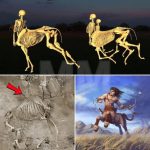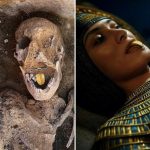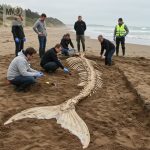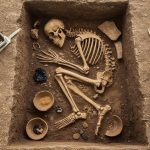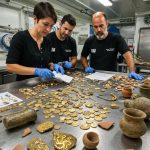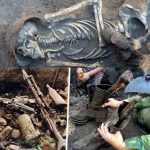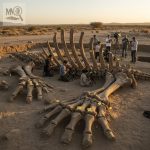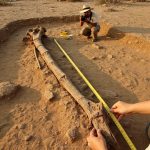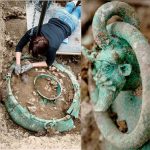Vedbæk’s Mesolithic Mother and Child Burial: A Window Into Ancient Rituals
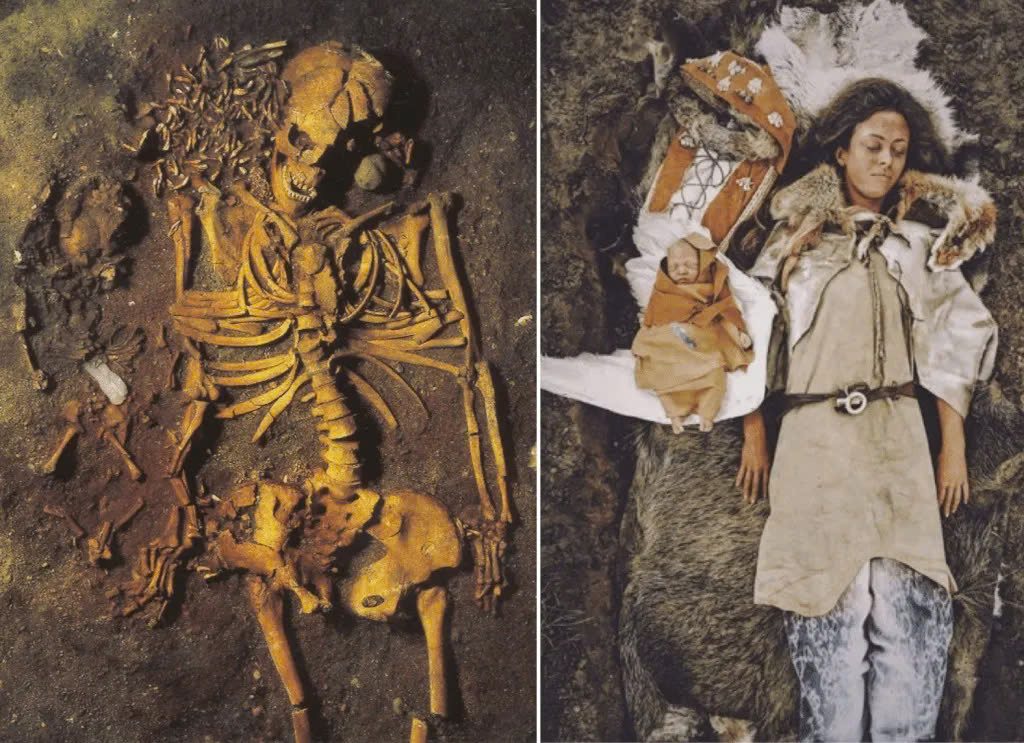
In Vedbæk, Denmark, archaeologists have uncovered one of the most poignant and illuminating discoveries of Mesolithic Europe: a 7,000-year-old burial of a young woman, approximately 20 years old, alongside her newborn child. This extraordinary find offers a rare glimpse into the spiritual beliefs, social structures, and ceremonial practices of hunter-gatherer societies during the Mesolithic period. Far more than a simple grave, the burial reflects symbolic care, reverence for life, and profound connections to nature.
A Touching and Symbolic Burial

The infant was placed within the extended wing of a swan, a gesture rich in spiritual meaning. Swans, often associated with purity, beauty, and transformation, may have represented a protective or guiding presence for the newborn’s spirit. This unique placement underscores the symbolic sophistication of Mesolithic communities, suggesting that they attributed significant ritualistic importance to birth, death, and the continuation of life.
The mother’s head was adorned with 200 red deer teeth, arranged meticulously as a form of ceremonial ornamentation. Such an elaborate decoration indicates her elevated status within her community or a symbolic role in the burial ritual. The teeth may have represented strength, fertility, or spiritual power, reflecting the deep reverence Mesolithic peoples had for both humans and animals.
Additionally, a carefully placed flint knife near the infant highlights the ceremonial care embedded in the burial. The inclusion of tools in graves is a common practice among hunter-gatherers, symbolizing protection, provision, or a connection to daily life even after death. Together with the swan placement and deer-tooth adornment, the grave demonstrates a sophisticated understanding of ritual and the interconnectedness of life, death, and the natural world.

Insights Into Mesolithic Society
This burial provides invaluable insights into the social and spiritual lives of Mesolithic hunter-gatherers. The attention to detail suggests that certain individuals were honored with elaborate rituals, possibly reflecting their social importance, spiritual role, or symbolic value within the community. Furthermore, the combination of animal symbolism, personal adornment, and ceremonial objects highlights the rich symbolic language of prehistoric Europe, demonstrating that Mesolithic peoples expressed complex ideas about life, death, and the cosmos.
The Vedbæk burial also underscores the emotional depth of ancient societies. The positioning of mother and child together suggests a recognition of familial bonds and grief, emphasizing the universality of human attachment across time. It reminds us that early humans were capable of profound emotional and spiritual expression, far beyond mere survival instincts.
Conclusion
The Mesolithic mother and child burial at Vedbæk is a remarkable testament to the symbolic sophistication, ritualistic practices, and deep human connections of ancient hunter-gatherers. From the swan-wing placement of the infant to the mother’s deer-tooth adornments and ceremonial flint knife, every element conveys care, reverence, and spiritual meaning. This discovery not only enriches our understanding of Mesolithic society but also provides a powerful glimpse into the timeless bonds of family, the significance of ritual, and humanity’s enduring relationship with the natural world.
